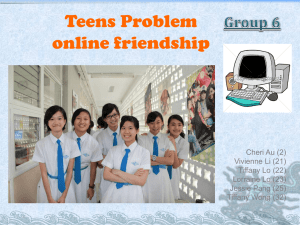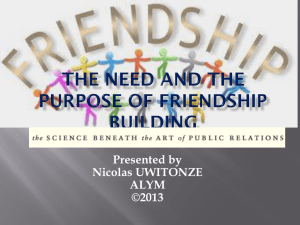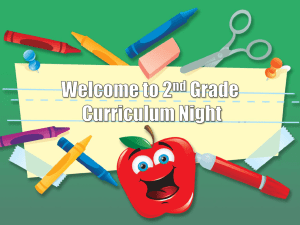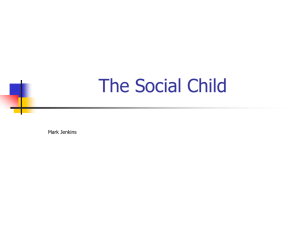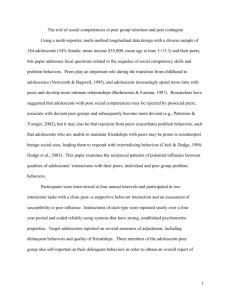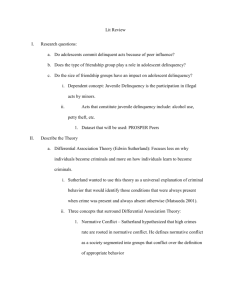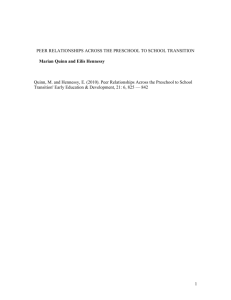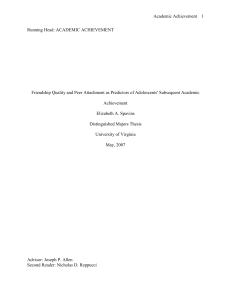Developing Friendships: A Preschool Priority
advertisement
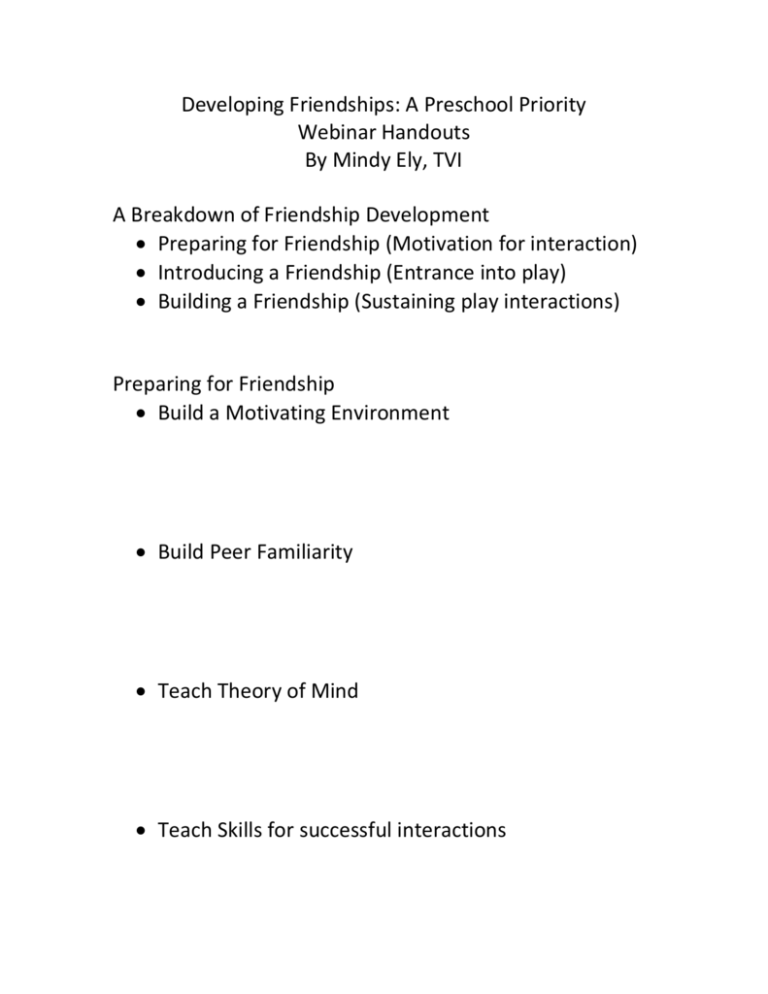
Developing Friendships: A Preschool Priority Webinar Handouts By Mindy Ely, TVI A Breakdown of Friendship Development Preparing for Friendship (Motivation for interaction) Introducing a Friendship (Entrance into play) Building a Friendship (Sustaining play interactions) Preparing for Friendship Build a Motivating Environment Build Peer Familiarity Teach Theory of Mind Teach Skills for successful interactions Introducing a Friendship (Entrance into Play) Identify Play Options Choose a Play Option Move to the Play Use Appropriate Entry Script Building a Friendship (Sustaining Play) Interaction Skills Teacher Involvement and Modeling Teach Typical Preschool Play Schemes Teach Turn-Taking Practice Contingent Conversational Skills Self-Reflection How much emphasis to you play on teaching students to engage in age-appropriate, peer interactions? Where are your student’s strong and weak related to these interactions? How can you support their strengths and improve their weaknesses? Peer-Interaction Checklist For Preschool Children with Visual Impairments Child:____________________________ Age:__________ Date of Observation: ______________________________ Observer’s Name: _________________________________ Observer’s Role:__________________________________ Initial Observation and Information Classroom schedule: (note any portions of the schedule in which the student is regularly removed from the room for therapy or other services) Describe child’s peer-engagement level during teacherdirected activities such as small group, circle time, or oneon-one instruction: Describe child’s peer-engagement level during unstructured or child-directed activities such as free choice or gross motor play: Preparing for Friendship Environmental Considerations Does the child interact with a variety of items in ageappropriate ways? Is the child familiar with: o The environment and it’s contents? o The schedule? o Expected routines? Peer Familiarity Is the child familiar with a variety of children in the classroom? For example, does the child call various children by name or ask to play with specific children? Do the children in the classroom appear comfortable interacting with the child who has a visual impairment? Theory of Mind Does the child appear to be aware of the emotions of peers? Does the child appear to be aware of the impact their current or past actions have on others? Does the child anticipate how their future actions will impact others? Skills for Success Concerning age-appropriate engagement with other children, does the child o Cooperate? o Collaboratively problem-solve? o Express curiosity or interest? o Regulate his/her own emotions? Introducing a Friendship (Entrance into Play) Identify Play Options o Does the child know the environment well enough to identify options for play? o Does the child know the children well enough to ask to join playmates by name? o Does the child use resources to inquire about play options? Choose a Play Option o Does the child make choices once options are identified? Move to the Play o Does the child move independently and purposefully within the environment? Use Appropriate Entry Script o Is the child successful in gaining entry into play with peers? o Does the child ask necessary questions so that he/she can enter into play in an acceptable manner? Building a Friendship (Sustaining Play) Interaction Skills o Do skills in the following areas prohibit ongoing play once entry has been accomplished? Cooperation Collaborative problem solving Curiosity Self-regulation List any other interactive skills that prohibit the child from successful ongoing play: Teacher Involvement and Modeling o How do teachers introduce new play schemes and materials? Is this enough instruction for the child or is additional instruction needed by specialists? o Do teachers typically voice non-verbal cues related to rules for play as the children develop them? o How do teachers encourage and/or facilitate peer interactions? Teach Typical Preschool Play-Schemes o What play-schemes do the children commonly engage in? o Are these play-schemes (and the materials involved) familiar to the child? o Is the child successful in engaging in ongoing play in common play-schemes? Teach Turn-Taking o Is the child able to comply with turn-taking rules to allow for successful ongoing play? Practice Contingent Conversational Skills o In conversation with peers, does the child stay on-topic? build on the ideas of others? ask questions related to another’s perspective or feelings? add to the conversation in a way that is considerate of peer perspective and/or interest?
